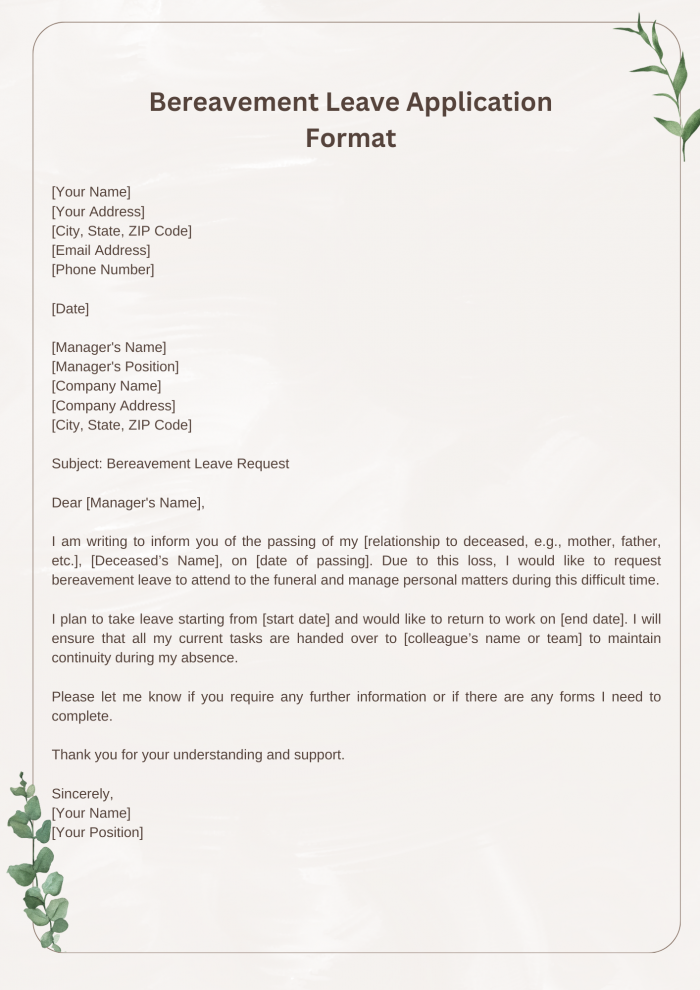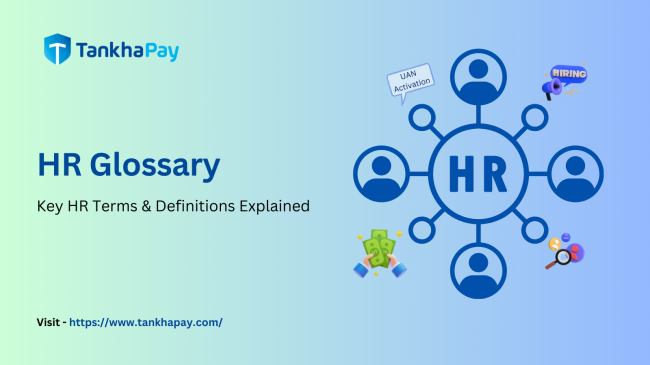Employees may need to stand back and assist others in their grief process when life throws them into moments of extreme loss. This leave is intended to alleviate the employees' grief over the loss of a loved one. As soon as possible following the death, employees should report the incident to the company and request bereavement leave.
This post delves into the idea of bereavement leave, including its importance and the ways in which workers can apply for this kind of absence. Learn how to professionally and empathetically handle the bereavement leave request procedure and acquire knowledge on relevant policy regulations. Empower yourself with the knowledge needed to approach this delicate aspect of work-life with understanding and resilience.
What is Bereavement Leave?
Bereavement Leave is a supportive and paid policy offered by employers to assist employees dealing with the profound loss of a family member, relative, spouse, children, sibling, or another significant relationship. This compassionate leave acknowledges the intense grief that accompanies such situations, providing employees with the necessary time to navigate their emotions.
To avail of bereavement leave, employees typically need to promptly inform their employers after the occurrence of the loss. While not mandatory, this policy reflects a company's commitment to caring for its employees during challenging times. The duration of bereavement leave is commonly set at three days, although flexibility exists among organizations, allowing employees to discuss and tailor this period with their respective managers.
Significance of Bereavement Leaves
Bereavement leave is a kind policy that helps workers go through the difficult time after a loved one passes away. This type of leave serves several crucial purposes.
- Grieving the Loss - Employees experience grief in unique ways, and bereavement leave policies recognize this diversity. The granted number of days varies across policies, providing employees with the personal time needed to mourn and grieve alongside family members.
- Facilitating Funeral Arrangements - Some people need more time off in order to plan their funerals. Policies concerning bereavement leave typically allow employees to prolong their absence for this particular reason, enabling them to carry out their responsibilities.
- Attending Funeral Services - Bereavement leave is structured to allow employees sufficient time to attend memorial services, honor commitments to the deceased, and be present at the funeral. Typically, this period spans three days but can be extended to accommodate individual needs.
- Recovery Time - Beyond coping with the loss, some companies recognize the need for employees to recover from the traumatic event. Additional days may be granted for individuals to spend time with family, regain personal equilibrium, and transition back into their professional lives.
- Providing Support - While bereavement leave is not universally mandatory, it is offered as a valuable employee benefit. This provision aims to create a supportive environment, allowing employees to strike a balance between their professional responsibilities and personal well-being.
How Does A Bereavement Leave Work?
Bereavement leave is a crucial benefit offered by employers to support employees in the event of a major loss. Bereavement leave functions differently in every company, with different requirements and standards.
Here's how to apply for bereavement leave, step-by-step:
- Policy Variations - Companies may offer bereavement leave as a standalone policy, while others incorporate it into sick leave, vacation policies, or Family and Medical Leave. The duration of bereavement leave can range from a flexible time frame to a set number of days, with some organizations extending it up to 12 weeks.
- Eligibility Criteria - The requirements for eligibility differ throughout companies; some only grant bereavement leave to full-time workers, while others include part-timers in this category as well.
- Documentation Requirements - Employers may request employees to provide information regarding the deceased, complete necessary paperwork, and, in certain cases, furnish a death certificate. The specific requirements depend on the company's policy.
- Paid vs. Unpaid Leave - Bereavement leave can be either paid or unpaid, determined by the duration of the leave and the organization's policy. Some companies adopt a combination of both paid and unpaid leave to accommodate different situations.
- Flexibility and Discussions - Recognizing that individuals may require varying durations to cope with loss, some companies offer flexible bereavement leave policies. While not universally mandatory, employees can engage in discussions with employers to negotiate time off for healing and recovery.
- Policy Updates - Bereavement leave policies are subject to periodic updates to align with evolving employee needs and avoid workplace discrimination claims. Businesses may review and improve their policies to offer all-encompassing assistance.
- HR Support - In these trying times, the Human Resources (HR) division is essential in helping staff members. HR may provide extra programs and support services in addition to the leave policy to assist staff members in successfully navigating the grief process.
Bereavement Leave Application Format
[Your Name]
[Your Address]
[City, State, ZIP Code]
[Email Address]
[Phone Number]
[Date]
[Manager's Name]
[Manager's Position]
[Company Name]
[Company Address]
[City, State, ZIP Code]
Subject: Bereavement Leave Request
Dear [Manager's Name],
I am writing to inform you of the passing of my [relationship to deceased, e.g., mother, father, etc.], [Deceased’s Name], on [date of passing]. Due to this loss, I would like to request bereavement leave to attend to the funeral and manage personal matters during this difficult time.
I plan to take leave starting from [start date] and would like to return to work on [end date]. I will ensure that all my current tasks are handed over to [colleague’s name or team] to maintain continuity during my absence.
Please let me know if you require any further information or if there are any forms I need to complete.
Thank you for your understanding and support.
Sincerely,
[Your Name]
[Your Position]

Applying for Bereavement Leave
Experiencing the loss of a loved one is an emotionally challenging and unforeseen circumstance. When seeking bereavement leave, it's crucial to navigate the process with sensitivity and clarity. It is important to approach the situation with both sensitivity and clarity.
Here's a step-by-step guide on how to apply for bereavement leave -
Applying for Bereavement Leave
Bereaving a loved one is an unexpected and emotionally taxing event. Being sensitive and clear in the procedure is essential when applying for bereavement leave. Here's a step-by-step guide on how to apply for bereavement leave:
Promptly Inform Your Employer
As soon as the loss occurs, inform your employer at the earliest opportunity. Bereavement leaves are often unexpected, and prompt notification allows for necessary paperwork and facilitates the redistribution of workload among colleagues.
Utilize a Leave Management System
Some companies may have specific protocols for applying for leave through letters or emails. However, modern solutions like Keka HR offer a more efficient approach. These systems streamline leave requests, manage employee schedules, and automate payroll processes, reducing errors and compliance issues.
Discuss the Duration of Leave
Bereavement leave durations can vary between companies. Engage in a discussion with your employer to determine the appropriate duration. Some policies are flexible and may be extended under special circumstances, emphasizing the importance of clear communication.
Complete Necessary Paperwork
Fulfilling paperwork requirements is an essential aspect of the bereavement leave application process. This may involve submitting forms for death certificates or providing proof of the loss, such as copies of obituaries or travel documents. Utilizing digital solutions like Keka HR can simplify and expedite the paperwork process.
Arrange Workload Assistance
Acknowledge that unexpected bereavement leaves may leave ongoing responsibilities unattended. Arrange for a co-worker to assist with your workload during your absence. This collaborative approach ensures that work continues smoothly and demonstrates consideration for your team.
















